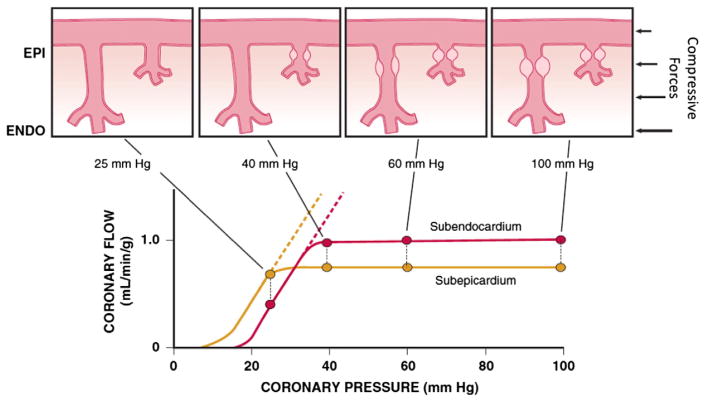Fig. 2.
Transmural variations in coronary autoregulation and myocardial metabolism. Increased vulnerability of the subendocardium (ENDO; red) versus subepicardium (EPI; gold) to ischemia reflects the fact that autoregulation is exhausted at a higher coronary pressure (40 versus 25 mm Hg). This is the result of increased resting flow and oxygen consumption in the subendocardium and an increased sensitivity to systolic compressive effects because subendocardial flow only occurs during diastole. Subendocardial vessels become maximally vasodilated before those in the subepicardium as coronary artery pressure is reduced. These transmural differences can be increased further during tachycardia or during conditions with elevated preload, which reduce maximum subendocardial perfusion. Modified from Canty and Duncker6 with permission.

